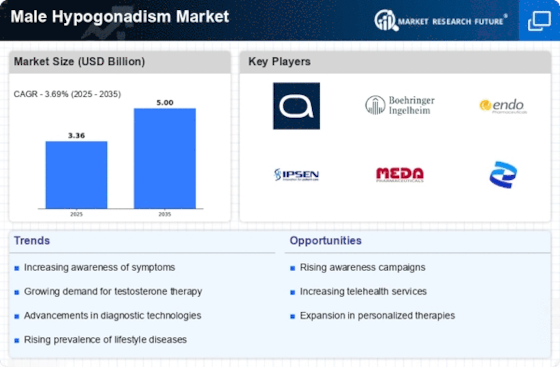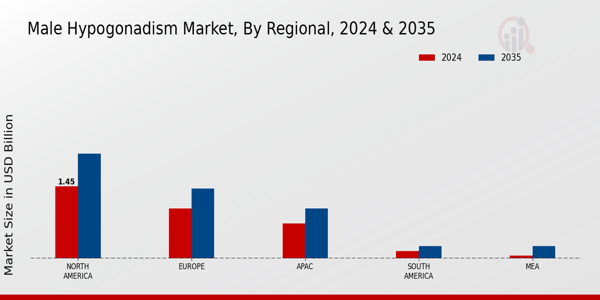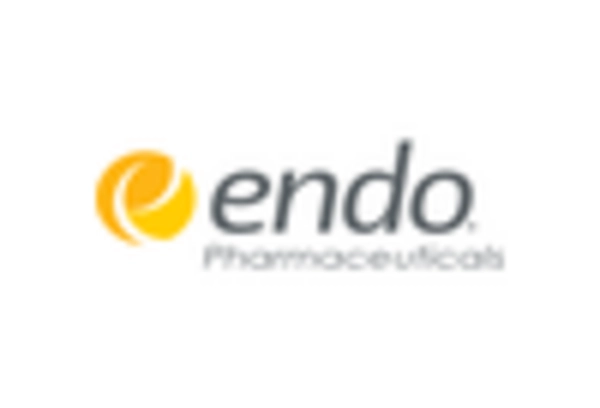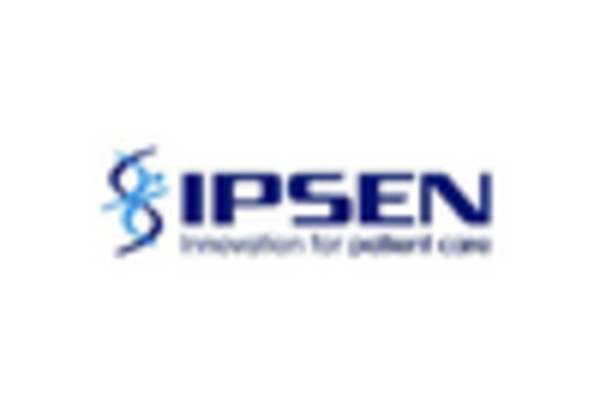Advancements in Diagnostic Techniques
Technological innovations in diagnostic methods are transforming the Male Hypogonadism Market. Enhanced testing procedures, such as improved blood tests and hormone level assessments, allow for more accurate and timely diagnosis of hypogonadism. These advancements not only facilitate early detection but also contribute to better patient outcomes. The introduction of point-of-care testing devices has made it easier for healthcare providers to diagnose testosterone deficiency in various settings. As a result, the market for diagnostic tools is expanding, with a projected growth rate of around 6% annually. This trend underscores the importance of accurate diagnosis in the management of male hypogonadism, thereby driving the Male Hypogonadism Market forward.
Increased Focus on Preventive Healthcare
The shift towards preventive healthcare is reshaping the Male Hypogonadism Market. As healthcare systems worldwide emphasize early intervention and preventive measures, there is a growing recognition of the importance of maintaining optimal testosterone levels. This focus encourages men to undergo regular health screenings, which can lead to earlier diagnosis of hypogonadism. Furthermore, educational campaigns aimed at promoting male health awareness are gaining traction, potentially increasing the number of men seeking treatment. This proactive approach not only enhances patient outcomes but also stimulates market growth, as more individuals become aware of the implications of untreated hypogonadism. The Male Hypogonadism Market stands to benefit from this trend as healthcare providers adapt to meet the needs of a more health-conscious population.
Increasing Prevalence of Male Hypogonadism
The rising incidence of male hypogonadism is a pivotal driver for the Male Hypogonadism Market. Studies indicate that approximately 4 to 5 million men in the United States alone are affected by this condition, which is characterized by low testosterone levels. This prevalence is expected to grow as the population ages, with a significant portion of men over 40 experiencing symptoms. The increasing recognition of hypogonadism as a legitimate health concern has led to greater demand for diagnostic testing and treatment options. Consequently, pharmaceutical companies are investing in research and development to create innovative therapies, thereby expanding the Male Hypogonadism Market. As awareness continues to rise, it is likely that more men will seek medical advice, further propelling market growth.
Growing Demand for Hormone Replacement Therapy
The increasing acceptance of hormone replacement therapy (HRT) is a significant factor influencing the Male Hypogonadism Market. As more men become aware of the benefits of testosterone therapy, the demand for HRT options is surging. Market data suggests that the testosterone replacement therapy segment is expected to witness a compound annual growth rate of approximately 7% over the next few years. This growth is attributed to the effectiveness of HRT in alleviating symptoms associated with low testosterone, such as fatigue, depression, and reduced libido. Pharmaceutical companies are responding to this demand by developing a range of delivery methods, including injections, patches, and gels, thereby diversifying the Male Hypogonadism Market.
Rising Interest in Male Wellness and Lifestyle
The growing interest in male wellness and lifestyle management is significantly impacting the Male Hypogonadism Market. As societal attitudes shift towards holistic health, men are increasingly prioritizing their physical and mental well-being. This trend is reflected in the rising popularity of fitness regimes, nutritional supplements, and wellness programs aimed at enhancing testosterone levels. Market Research Future indicates that the male wellness industry is projected to grow substantially, with a focus on products that support hormonal balance. This heightened interest in overall health is likely to drive more men to seek solutions for hypogonadism, thereby expanding the Male Hypogonadism Market. As lifestyle changes become more mainstream, the demand for effective treatments and preventive measures is expected to rise.


















Leave a Comment